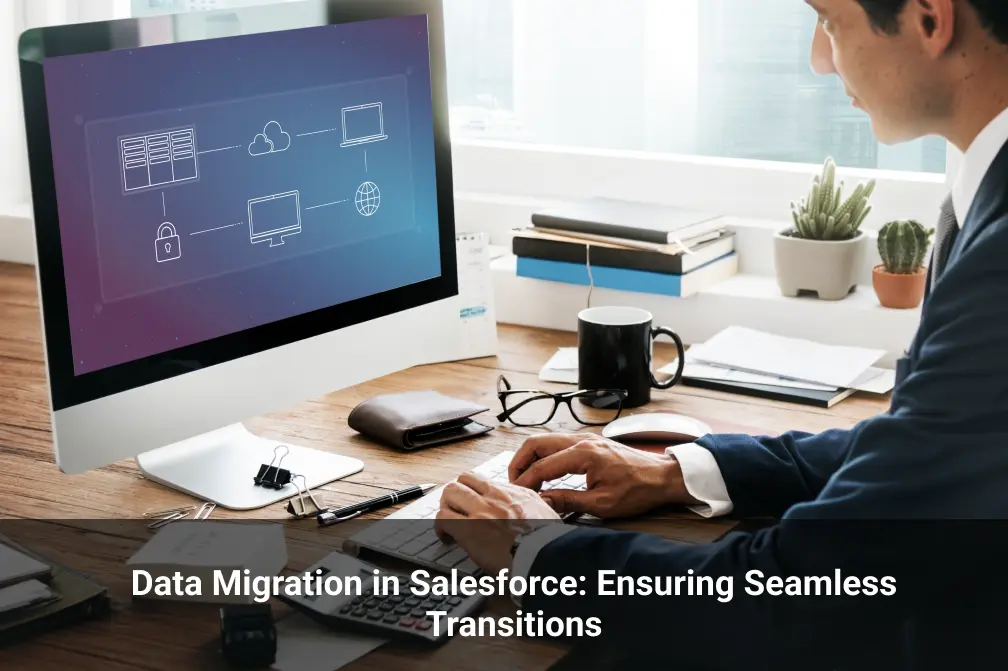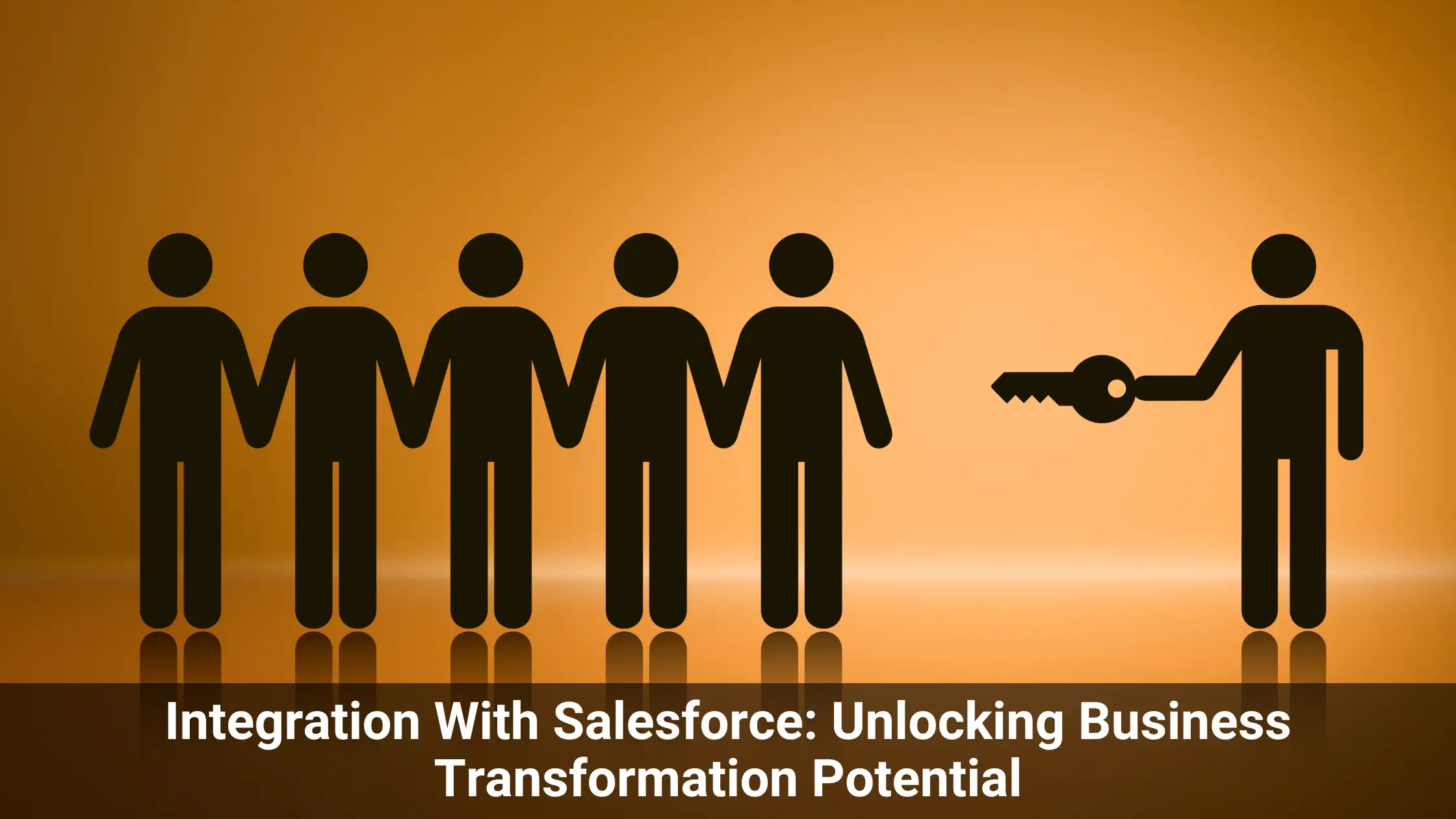Data Migration in Salesforce: Ensuring Seamless Transitions

Table of Contents
Data migration is a crucial process when it comes to Salesforce, the leading Customer Relationship Management (CRM) platform. In this article, we'll explore the importance of data migration in Salesforce and its significance in managing customer relationships and business data.
As businesses grow and evolve, the need to transfer data from legacy systems or other CRM platforms to Salesforce becomes essential. Data migration involves transferring data from one system to another while ensuring its accuracy, completeness, and integrity. This process is vital as it guarantees a smooth transition, allowing businesses to continue leveraging Salesforce's powerful capabilities without interruption.
Salesforce, known for its user-friendly interface and robust functionalities, serves as a centralized platform for managing customer relationships and critical business data. It empowers organizations to streamline sales, marketing, and customer service processes, providing real-time insights and driving growth.
With Salesforce, businesses can track customer interactions, manage leads and opportunities, automate workflows, and gain actionable intelligence through advanced analytics. However, to harness the full potential of Salesforce, ensuring the efficient migration of existing data is paramount.
By migrating data to Salesforce accurately, businesses can maximize their ROI on this powerful CRM platform. It enables companies to have a comprehensive view of their customers, improve collaboration across departments, enhance customer service, and make data-driven decisions. Data migration in Salesforce sets the foundation for a successful implementation and utilization of the CRM system.
Data migration plays a crucial role in Salesforce, ensuring a smooth transition and enabling businesses to fully leverage the platform's capabilities. By understanding the significance of Salesforce in managing customer relationships and business data, organizations can realize the full potential of this CRM powerhouse.
Understanding Data Migration
When it comes to migrating data on Salesforce, it's crucial to have a solid understanding of the process. In this section, we will delve into the definition and key concepts of data migration, highlight the importance of a well-executed process, and discuss the challenges and potential risks that may arise during the migration.
A. Definition and Key Concepts
Data migration refers to the process of transferring data from one system to another, such as moving data from legacy systems to Salesforce. It involves extracting, transforming, and loading (ETL) data to ensure seamless integration. Key concepts to be aware of include:
- Data Mapping: Mapping fields from the source system to the corresponding fields in Salesforce.
- Data Cleansing: Cleaning and refining data to eliminate duplicates, inconsistencies, and inaccuracies.
- Data Validation: Verifying the accuracy and integrity of data before and after migration.
B. Importance of a Well-Executed Data Migration Process
Executing a data migration process successfully is essential for several reasons. It ensures a smooth transition to Salesforce, minimizes disruptions to business operations, and maintains data integrity. A well-executed data migration process guarantees that the migrated data is accurate, complete, and accessible, enabling businesses to leverage Salesforce's functionalities effectively.
C. Challenges and Potential Risks in Data Migration
Data migration poses its fair share of challenges and potential risks. Some common challenges include:
- Legacy Data Compatibility: Converting and migrating data from legacy systems that may use different data structures or formats.
- Data Volume: Handling large volumes of data during the migration process, which can affect performance and efficiency.
- Data Security: Protecting sensitive data during the migration process to ensure confidentiality and compliance with regulations.
Addressing these challenges and mitigating potential risks is crucial to the success of the data migration process.
Salesforce Data Migration Process
When it comes to migrating your data to Salesforce, it is crucial to follow a well-defined process to ensure a seamless and successful transition. The Salesforce Data Migration Process consists of several key steps:
A. Pre-Migration Planning
- Assessing the existing data and identifying migration requirements: Before starting the migration process, it is essential to understand the structure and quality of your existing data. This will help you identify any potential data issues and determine the requirements for migration.
- Determining the scope and objectives of the migration: Clearly defining the scope and objectives of the migration will help you establish a clear plan and timeline for the process. It will also help you prioritize your data migration tasks.
- Mapping data fields and establishing data conversion rules: Mapping data fields involves identifying equivalent fields in Salesforce for each field in your source system. Establishing data conversion rules will ensure that data is transformed properly during the migration.
- Selecting suitable data migration tools for Salesforce: There are various data migration tools available for Salesforce. It is important to evaluate and select the most suitable tool based on your specific migration requirements.
B. Data Cleansing and Preparation
- Explaining the significance of data cleansing before migration: Data cleansing is a crucial step before migration as it helps improve data quality and reliability. It involves identifying and resolving any inconsistencies, errors, or duplicates in the data.
- Best practices for data cleansing and ensuring data quality: Implementing best practices for data cleansing, such as removing irrelevant data, standardizing data formats, and validating data against business rules, will help ensure the accuracy and integrity of your migrated data.
- Leveraging data integration techniques for seamless migration: Data integration techniques, such as data deduplication, data transformation, and data enrichment, can be utilized to streamline the migration process and ensure smooth data transfer from the source system to Salesforce.
- Recommendations for data management during migration: Proper data management during the migration process involves keeping track of data changes, maintaining data backups, and establishing a system for data rollback in case of any issues or errors.
C. Data Mapping and Conversion
- Understanding data mapping and its role in successful migration: Data mapping involves defining the relationships between fields in the source system and Salesforce objects. Proper data mapping ensures that data is accurately transferred and integrated into Salesforce.
- Guidelines for mapping source system fields to Salesforce objects: Following guidelines for data mapping, such as considering field compatibility, understanding data dependencies, and mapping related data together, will result in efficient and accurate data migration.
- Step-by-step process of data conversion and transformation: The actual process of converting and transforming data involves extracting data from the source system, applying data mapping rules, and loading the transformed data into Salesforce. This step requires careful planning and execution to ensure data integrity and completeness.
D. Execution and Testing
- Importance of pilot testing and validation during migration: Before migrating all your data, it is recommended to perform pilot testing with a subset of data to identify any issues or gaps. This allows for timely resolution and ensures a smooth migration process.
- Strategies for minimizing potential data loss or duplication: Implementing strategies like data backup, parallel testing, and data reconciliation helps minimize the risk of data loss or duplication during the migration process.
- Ensuring data integrity and accurately migrated records: Regularly validating migrated data, performing data quality checks, and reconciling data between the source system and Salesforce will help ensure data integrity and accuracy.
- Analyzing and resolving common migration issues: Understanding common migration issues such as field mapping errors, data truncation, and data inconsistency, allows for quick identification and resolution of these issues.
Best Practices for Data Migration with Salesforce
When it comes to data migration with Salesforce, it is crucial to follow best practices to ensure a smooth and successful migration process. Here are some key recommendations:
A. Creating a comprehensive data migration plan and timeline
Before embarking on a data migration project, it is essential to have a well-defined plan in place. This plan should outline the objectives, scope, and timeline of the migration process. It should also consider any potential risks and include contingencies to address them. By creating a comprehensive plan, you can ensure that all stakeholders are aligned and aware of the migration process.
B. Formulating an effective data validation strategy
Data validation is a critical step in the data migration process. It involves ensuring the accuracy, completeness, and consistency of the data being migrated. To formulate an effective data validation strategy, it is recommended to define data quality rules and perform thorough testing before and after the migration. This will help identify any issues or discrepancies and enable you to make necessary corrections before the data is migrated to Salesforce.
C. Ensuring data security and privacy during the migration
Data security and privacy should be a top priority during the data migration process. It is essential to evaluate and implement appropriate security measures to protect sensitive information. This may include encryption, access controls, and data masking techniques. Additionally, it is crucial to comply with data protection regulations and ensure that data is handled in a compliant manner throughout the migration.
D. Collaborating with stakeholders for a smooth migration process
Successful data migration requires collaboration and involvement from various stakeholders. It is essential to engage key stakeholders, such as business users, IT teams, and data owners, throughout the migration process. By involving them from the beginning, you can gather their requirements, address their concerns, and ensure that the migration aligns with their needs. Effective communication and regular updates are also vital to keep everyone informed and engaged.
E. Establishing data governance practices post-migration
Data governance is crucial for maintaining data quality and integrity in Salesforce after the migration. It involves defining and implementing processes, policies, and guidelines for managing and maintaining data. Post-migration, it is recommended to establish data governance practices to ensure ongoing data integrity, standardization, and cleanliness. This may include regular data audits, data stewardship roles, and data quality monitoring.
By following these best practices, you can maximize the benefits of data migration with Salesforce and ensure a seamless transition. Remember that data migration is not just a one-time process but an ongoing effort to maintain data accuracy and quality in your Salesforce environment.
Leveraging Salesforce Marketing Features
Salesforce offers a variety of powerful marketing features that can help businesses enhance customer engagement and streamline their marketing efforts. With the ability to seamlessly integrate marketing functionalities with migrated data, you can take your marketing campaigns to the next level.
A. Utilizing Salesforce marketing functionalities for enhanced customer engagement
One of the key advantages of Salesforce is its robust set of marketing features. By leveraging these functionalities, you can engage with your customers more effectively. Salesforce allows you to create personalized email campaigns, manage social media interactions, and track campaign performance in real-time. With these tools at your disposal, you can build stronger relationships with your customers and drive higher engagement rates.
B. Exploring marketing automation options and integration with migrated data
Automating your marketing processes can significantly improve efficiency and effectiveness. Salesforce offers powerful marketing automation options that can help you streamline repetitive tasks and ensure consistent messaging across your campaigns. By integrating your migrated data with these automation features, you can personalize your marketing efforts and deliver targeted messages that resonate with your audience. This integration enables you to automate lead nurturing, tailor content to specific segments, and track campaign success with ease.
C. Strategies for leveraging Salesforce reports and analytics in marketing campaigns
Salesforce provides robust reporting and analytics capabilities that can provide valuable insights for your marketing campaigns. By leveraging these features, you can measure the effectiveness of your marketing efforts, identify trends, and make data-driven decisions to optimize your campaigns. With Salesforce reports and analytics, you can track key performance indicators, such as conversion rates and customer engagement metrics, and identify areas for improvement. By using these insights, you can continuously refine your marketing strategies and achieve better results.
Field-Level Data Migration Considerations in Salesforce
When it comes to data migration in Salesforce, it is crucial to pay close attention to the field-level mapping. This involves understanding the significance of each field and ensuring its successful migration.
A. Understanding the significance of field-level mapping
In Salesforce, each field represents a specific piece of data that is essential for your business operations. During the data migration process, you need to ensure that the data from each field is accurately mapped to its corresponding field in Salesforce. This ensures that the integrity and consistency of your data are maintained.
B. Handling custom fields and objects during migration
Salesforce allows for customization through the creation of custom fields and objects. When migrating data, it is crucial to handle these custom elements with care. Make sure that the custom fields and objects are properly mapped, and that their relationships with other standard or custom fields are maintained.
C. Guidelines for mapping complex relationship fields
In Salesforce, you may come across complex relationship fields, such as lookup fields or master-detail relationships. Mapping these fields correctly is essential to maintain data accuracy and avoid any potential data loss. Follow the guidelines provided by Salesforce to ensure that these complex relationships are accurately mapped during the data migration process.
D. Considerations for migrating special fields like formula fields or picklists
Special fields in Salesforce, such as formula fields or picklists, require special attention during data migration. Formula fields are calculated based on other fields, so it is important to ensure that the source data is accurately mapped. Picklists, on the other hand, have predefined values, and mapping them correctly ensures that the data integrity is maintained post-migration.
By considering these field-level data migration factors, you can ensure a smooth and successful migration process in Salesforce, minimizing any potential data issues or loss.
Conclusion
Data migration is a crucial aspect of achieving success with Salesforce. It ensures that your valuable data is transferred accurately and efficiently, enabling your organization to fully leverage the power of the platform. Throughout this guide, we have explored the ins and outs of data migration, from understanding its importance to uncovering best practices for a seamless process.
By following the Salesforce data migration process and considering field-level data migration considerations, you can ensure that your data is migrated flawlessly. This will result in improved data integrity, better decision-making, and increased productivity within your organization.
In summary, the key points and best practices covered in this guide include:
- Understanding the significance of data migration for Salesforce success
- Familiarizing yourself with the Salesforce data migration process
- Implementing best practices for a smooth and error-free data migration
- Exploring the marketing features available in Salesforce to enhance your sales efforts
- Taking into account field-level data migration considerations for improved data quality
Remember, the success of your Salesforce implementation relies heavily on the accuracy and integrity of your data. By prioritizing data migration and incorporating the best practices discussed, you are setting yourself up for success in your Salesforce journey.
For more detailed information and additional resources, please refer to the appendices section of this guide.
Author Box
Rahul Saini
Rahul Saini is a published author of three books, brand storyteller, and marketing specialist with experience across multiple industries like manufacturing, IT, and publishing. He is an intellectually curious, and creative person who loves to tell stories, read books, and write fiction.
Frequently Asked Questions
Maintaining data quality ensures that the migrated information is accurate, reliable, and usable, preventing errors and issues in business processes post-migration.
Successful data migration minimizes disruptions to daily operations, allowing businesses to seamlessly continue their activities on the Salesforce platform.
Data validation ensures that the migrated data meets specified criteria, reducing errors and discrepancies that could affect business processes on Salesforce.
The data migration process involves transferring data from one system to another, typically during a system upgrade or implementation. It includes planning, extracting, transforming, and loading data to ensure accuracy and completeness in the new system.
Data migration works by mapping data fields, converting formats, and validating data integrity. Automated tools or scripts are often used to streamline and validate the migration process, ensuring data consistency.




